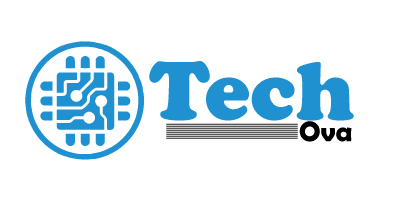In the fast-evolving world of financial markets, ftasiatrading technology is emerging as a powerful force — transforming how traders analyze data, execute trades, and manage risk. Whether you’re a retail investor wanting to up your game or a fintech entrepreneur evaluating the next frontier, this technology deserves a close look.
In this article, you’ll learn:
- What ftasiatrading technology means (and why it matters)
- Core features and innovations driving it
- The benefits (and challenges) it brings to traders
- Real-world use cases and adoption trends
- Best practices for integrating it into your trading setup
- Predictions for its future evolution
- FAQs to help you get started
Let’s dive in.
What Is ftasiatrading Technology?
At its core, ftasiatrading technology refers to a suite of advanced tools, systems, and methodologies that use automation, data intelligence, and connectivity to streamline and optimize trading across financial markets. Rather than relying entirely on human intuition, this technology blends algorithmic intelligence with human oversight to generate faster, more informed, and adaptive trade decisions.
You can think of ftasiatrading technology as the “smart engine” that powers next-generation trading platforms — enabling:
- seamless integration of live market data
- rapid signal detection from multiple sources
- automated execution of trades (based on rules or machine learning)
- advanced risk control mechanisms
- transparency, security, and auditability
Over time, this technology is accelerating the shift from manual or semi-automated trading to highly autonomous systems.
Key Components & Innovations
To understand how ftasiatrading technology works, let’s break it into its main components and innovations. Each plays a vital role in making the system efficient, intelligent, and responsive.
AI & Machine Learning
One of the engines behind ftasiatrading technology is artificial intelligence (AI) and machine learning (ML). These enable the system to:
- learn from historical data and market behavior
- spot non-obvious patterns or anomalies
- generate predictive signals (momentum shifts, trend reversals)
- adapt models as new data arrives
Because financial markets are dynamic, static rules often underperform. ML models allow the system to update itself with new insights.
Real-Time Data & Analytics
Fast, accurate data is the lifeblood of any modern trading system. ftasiatrading technology typically includes:
- live feeds from exchanges (stocks, forex, commodities, crypto)
- high-frequency tick data, order book depth, and volume profiles
- news sentiment analysis and macroeconomic data streams
- dashboards and visualizations to monitor performance
Having that stream of intelligence helps traders and systems make split-second decisions.
Algorithmic & Automated Execution
Once the system spots signals or conditions, automated execution steps in. This may include:
- placing limit orders, market orders, stop-loss or take-profit triggers
- scaling into or out of positions
- executing strategies like arbitrage, pairs trading, or momentum capture
- adjusting dynamically to slippage, latency, and market impact
With automation, the system performs trades far faster than manual execution, reducing human delay or emotional bias.
Risk Management & Hedging Tools
Trading is not just about profit — it’s about preserving capital. Hence, ftasiatrading technology includes:
- risk thresholds (max drawdown, position size limits)
- portfolio-level hedging recommendations
- volatility-based stops and dynamic rebalancing
- scenario stress testing and Monte Carlo simulations
Such features help protect against unexpected drawdowns or extreme swings.
Security, Compliance & Blockchain
Because finance involves sensitive data and real money, security is non-negotiable in ftasiatrading technology. Key features include:
- data encryption in transit and at rest
- multi-factor authentication and role-based access
- audit trails for every trade and decision
- regulatory compliance (KYC/AML, data governance)
- optional use of blockchain or smart contracts for transparency
Together, these components make the technology robust and trustworthy.
Why ftasiatrading Technology Matters
You might wonder: in a space filled with trading platforms already using bits of automation, what sets ftasiatrading technology apart — and why should it matter to you? Here are several compelling reasons:
- Speed & Efficiency
In volatile markets, every millisecond counts. Systems powered by ftasiatrading can detect, decide, and act far faster than humans. - Data-Driven and Objective
By relying on algorithmic criteria and analytics rather than emotion, the technology helps reduce behavioral biases like fear and greed. - Scalability & Multi-Asset Reach
You can monitor and trade across multiple asset classes (stocks, forex, crypto, commodities) within one system. - Consistency & Backtesting
You can rigorously test strategies with historical data and deploy the same logic consistently. - Lower Operational Costs
Automation reduces dependence on manual processes and middlemen, streamlining workflows. - Accessibility & Democratization
Tools that were once exclusive to hedge funds or institutions are now accessible to smaller traders.
In short, ftasiatrading technology is helping bring Wall Street–level sophistication to a broader audience.
Benefits for Traders, Institutions & Startups
Here’s how different players benefit from embracing ftasiatrading technology:
| Stakeholder | Key Benefits |
|---|---|
| Retail Traders | Access to algorithmic insights, automated trading, and portfolio management tools |
| Professional Traders | Faster execution, more complex strategies, and better risk management |
| Brokerages & Fintech Firms | Differentiated offerings, lower infrastructure costs, improved client retention |
| Asset Managers & Funds | Enhanced quantitative strategies and integration of alternative data |
| Startups | Ability to build niche fintech products on top of ftasiatrading frameworks |
Potential Challenges & Risks
No technology is perfect. Here are the main challenges associated with ftasiatrading technology:
- Model Overfitting & False Signals – Intelligent models sometimes overfit data and fail under new conditions.
- Latency & Infrastructure Costs – Speed and connectivity demands can increase expenses.
- Black Box Models – AI systems can lack transparency.
- Regulatory Hurdles – Compliance standards vary globally.
- Security Threats – Cyberattacks and data breaches can be costly.
- Market Shocks – Automated systems may amplify volatility during crises.
The solution lies in combining automation with human oversight and continuous monitoring.
Real-World Use Cases & Adoption
While the term ftasiatrading technology may still be emerging, its principles are already widely used across fintech and finance. Some examples include:
- AI-Powered Signal Generation for retail trading apps
- Robo-Advisory Platforms offering automated portfolio management
- Quantitative Hedge Funds using algorithmic models for multiple markets
- Cross-Border Trading Systems integrating data and execution across global exchanges
- Blockchain-Based Settlement Systems ensuring transparency and faster clearing
These examples show how automation and intelligence are reshaping finance.
How to Integrate ftasiatrading Technology into Your Strategy
If you’re ready to leverage this innovation, here’s a roadmap:
1. Define Your Objectives
Clarify whether your goal is trend following, mean reversion, or risk hedging.
2. Gather Quality Data
Use reliable sources for market, sentiment, and macroeconomic data. Clean and normalize it before use.
3. Develop & Test Strategies
Build models based on clear logic. Backtest using historical data and validate under multiple scenarios.
4. Implement Risk Controls
Set maximum drawdowns, define position sizes, and use stop-loss mechanisms.
5. Automate Execution
Integrate APIs or trading bots that execute with precision and low latency.
6. Deploy Gradually
Start with paper trading or small allocations to validate system performance.
7. Monitor & Improve
Regularly retrain models, assess performance, and introduce manual checkpoints.
8. Ensure Compliance & Security
Encrypt all data, maintain audit trails, and stay up-to-date with legal requirements.
By following these steps, traders and firms can adopt ftasiatrading technology safely and effectively.
The Future of ftasiatrading Technology
The future of ftasiatrading technology looks dynamic and promising. Here are key trends to expect:
- Human-AI Collaboration – Blending machine precision with human intuition.
- Explainable AI – Making model decisions transparent and auditable.
- Quantum Computing Integration – Accelerating optimization and simulations.
- Deeper Blockchain Use – Automating settlements and compliance.
- Greater Accessibility – Bringing professional-grade tools to small investors.
- Modular Ecosystems – Allowing plug-and-play upgrades for signals, data, and analytics.
These advancements will make trading faster, safer, and more data-driven than ever.
Conclusion
ftasiatrading technology represents a leap forward in how financial markets operate. By integrating AI, automation, and data analytics, it allows traders and institutions to move beyond intuition and toward precision-based decision-making.
If you’re an investor, fintech developer, or analyst, this is the right time to explore and experiment with such technology. The markets of the future will favor those who understand both algorithms and emotions — and how to balance them effectively.
FAQ: Common Questions about ftasiatrading technology
Q1: Is ftasiatrading technology suitable for beginners?
Yes. Beginners can start with demo accounts and gradually learn automation basics before deploying real capital.
Q2: How much investment is needed to start?
You can start small, but scaling requires sufficient capital for execution speed, infrastructure, and data feeds.
Q3: Can it guarantee profits?
No. While it can improve efficiency and consistency, no trading system can eliminate market risk entirely.
Q4: How often should models be updated?
Ideally, models should be retrained every few weeks or months depending on market volatility and data drift.
Q5: Is regulatory compliance important?
Absolutely. Any use of algorithmic trading should follow local financial and data protection regulations.


